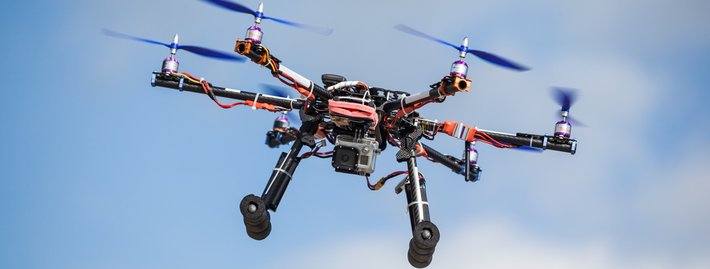Video Analysis
Read our onepagers (in Danish) for more on traffic measurements using drones.
Follow the link below to see how well we stabilize videos before processing them.
You are welcome to contact Hermes Traffic Intelligence to learn more about video analysis and our drone based solutions:
Follow the link below to request a quote for Video Analysis:
Using drones for traffic measurements
Using drones to capture footage of traffic as seen from above has its adventages. First of all it is easier to put up a drone for a limited period of time than it is install e.g. cameras in poles at an intersection. And with a drone it is possible to go both higher, to cover a larger area, and to move the camera around to find the most suitable place to film.
We have developed algorithms for analysing drone imagery from different scenarios. If you wish to obtain knowledge about traffic for a given stretch this requires a specific set of functionality, while area based knowledge requires a different set.
Traffic counts
To get more knowledge about a stretch of road, e.g. the distribution of speed or car density, we need to have the drone fly over the stretch, preferably having small standstills at predefined locations.
BPR function calibration
In traffic modelling, the BPR formula is commonly used to express the relationship between travel time and traffic flow. It is therefore crucial to have high quality and up-to-date knowledge of the parameters that define the BPR function if one is to have an accurate traffic assignment model. Drones can be used to provide the actual impact of traffic on travel time since they are able to perform both traffic count and speed measurements in the same time. In this way, the values for the parameters of the formula reflect the actual traffic resistance of the stretch, and there is no longer the need to use pre-defined, or assumed values. Using the observed Travel Time Tf (minutes) and the observed Traffic Volume V (vehicles per hour) as they are gathered by the drone, the α and β parameters can be accurately modelled and estimated.
Information about areas
To get proper information about an area it might be necessary to set up more than one drone. By stitching the images delivered by a number of drones it will be possible to cover a larger area. Analysing the larger cover can e.g. provide O/D matrices.
Stabilizing drone videos
Video Analysis was originally developed for use on drone videos only. Therefore image stabilization is part of the video processing. For videos originating from fixed cameras stabilizing usually is not necessary.
Although drones can be kept in much the same spot in the air for a prolonged period of time, they will still move slightly, making it different for automatic algorithms to analyse the video output. To mitigate this we have developed algorithms for stabilizing the drone videos before applying analysis to them. The video below shows the result of applying a stabilization algorithm to a drone video.

